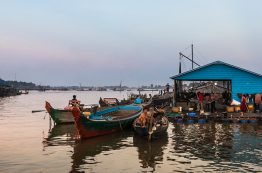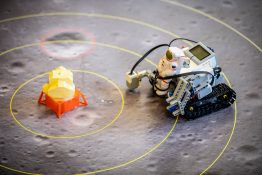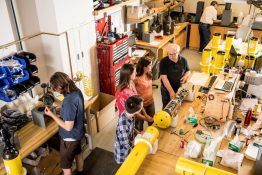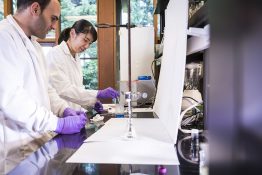Along the Mekong River in Cambodia, UW researchers are racing to determine how hydropower demand will impact the supplies of rice and fish — and the communities who rely on them.
Read more »UW-based group launches national challenge to recreate first moon landing — with drones and Lego robots
UW Northwest Earth and Space Sciences Pipeline marks the 50th anniversary of the Apollo moon landing with a cool challenge for elementary, middle and high school students.
Read more at UW News »UW, partners reach milestone in program using robots to monitor world’s oceans
Around the planet’s oceans, nearly 4,000 floats — many of them built at the University of Washington — are plunging up and down, collecting and transmitting observations of the world’s oceans. This fall, one of these diving robots made the program’s 2 millionth measurement, reporting temperature and salinity recorded to a depth of about a mile. The Argo Program is a 20-year-old project to gather 3D data on the oceans.
Read more at UW News »New UW-authored children’s book offers a robot’s-eye view of the deep ocean
After years working on a cabled observatory that monitors the Pacific Northwest seafloor and the water above, a University of Washington engineer decided to share the wonder of the deep sea with younger audiences. The result is “ROPOS and the Underwater Volcano” by Dana Manalang, an engineer at UW’s Applied Physics Laboratory. The book’s illustrator, Hunter Hadaway, is the creative director at the UW-based Center for Environmental Visualization.
Read more at UW Today »Harmful dyes in lakes, rivers can become colorless with new, sponge-like material
Dyes are widely used in industries such as textiles, cosmetics, food processing, papermaking and plastics. Globally, we produce about 700,000 metric tons of dye each year to color our clothing, eyeshadow, toys and vending machine candy. During manufacturing, a tenth of all dye products are discharged into the waste stream — most escape conventional wastewater-treatment processes and remain in the environment, often reaching lakes, rivers and holding ponds, and contaminating the water for the aquatic plants and animals that live there.
Read more at UW News »





